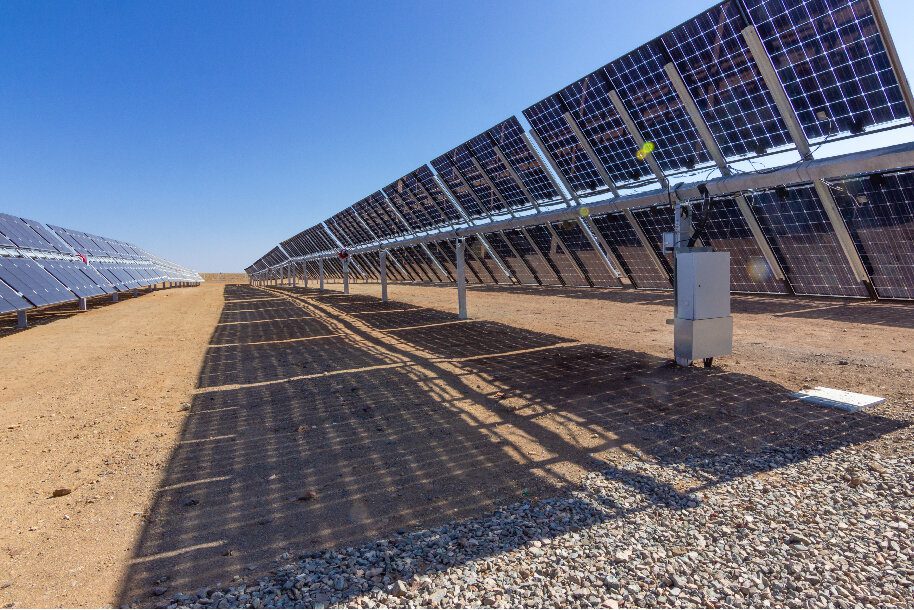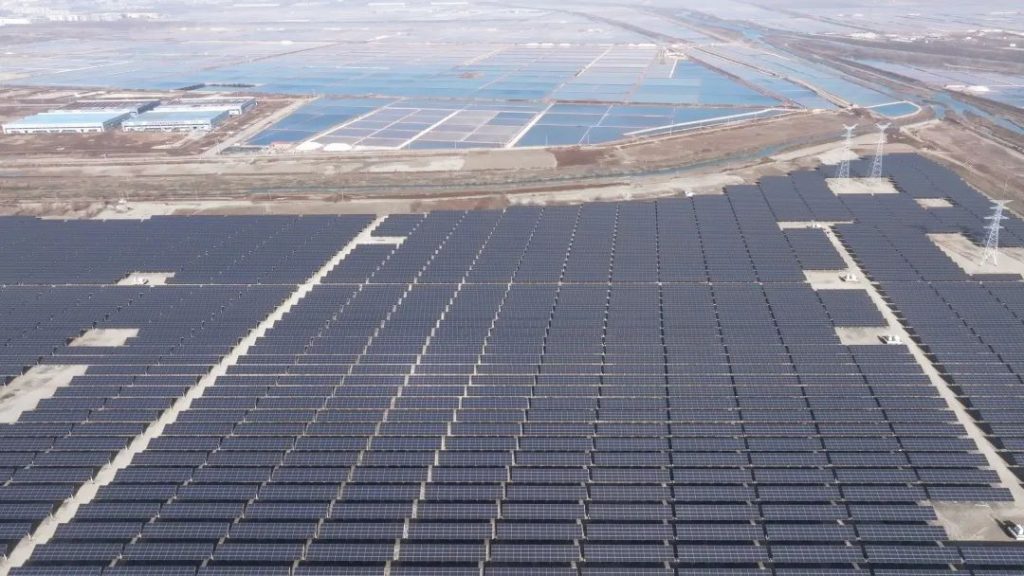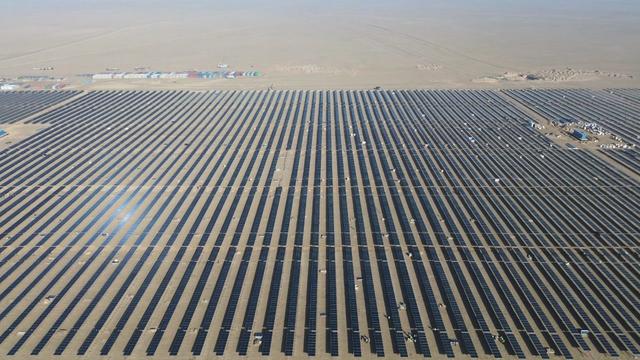In the unfolding landscape of the solar industry for 2024, a series of predictions has been put forth by Solarbe. These forecasts come on the heels of their 2023 predictions, which saw some validations, like an over 20% share for n-type solar cells, and the dip in silicon prices below CNY 80/kg. However, others were deemed somewhat conservative, such as module prices falling below CNY 1.3/W and global installations ranging from 350-400 GW.
As anticipation builds for 2024, the solar market is poised for change. The Solarbe team has outlined six key predictions for the development of the solar market and supply chain in the coming year.
1. Polysilicon Prices Expected to Drop Below CNY 50/kg
First on the radar is the trajectory of polysilicon prices. Unfortunately, this sector is anticipated to witness early-stage clearance of outdated capacities. Polysilicon production, being part of the heavy chemical industry, is highly automated and continuous, making it less flexible in adjusting production pace even in the face of price drops.
The industry’s inability to regulate production speed, coupled with the impact of inventory and supply-demand fluctuations, was a major driver of polysilicon price volatility in 2023.
By the end of 2023, the production of polysilicon stood at 1.475 million tons, with year-end capacity reaching around 2.4 million tons. Even without additional capacity in 2024, the existing capacity is projected to meet the production demands for 1000 GW+ of solar modules.

Experts estimate that by the end of 2024, polysilicon capacity will surpass 3 million tons. Clearly, after a few years of frenzied expansion, the polysilicon sector is set to remain in oversupply in 2024, with price reductions continuing to dominate.
As some companies begin using granular silicon to produce n-type silicon wafers, the price drop for n-type may be delayed but is inevitable, whereas pricing for p-type silicon remains unpredictable, causing a divergence in prices starting from the silicon material stage.
The expectation for 2024 is that absent unforeseen accidents or special circumstances, polysilicon prices will dip below CNY 50/kg. When the price of p-type material reaches around CNY 40/kg, lower than the production cost and even the cash cost for some manufacturers, it might force the withdrawal of some outdated capacities, resetting the market’s supply-demand balance.
The news of a polysilicon enterprise in Inner Mongolia halting production in December is just the beginning; more shutdowns and maintenance news may follow.
How long will this process last? Previous industry predictions suggested that by the second half of 2024, the supply chain would achieve capacity clearance. However, our forecast is more pessimistic—at least until the end of 2024, oversupply will remain the dominant theme in the PV manufacturing sector.
2. Module Prices Continuing to Explore New Lows
In 2023, Solarbe closely monitored tenders in the solar industry, especially in the module sector, releasing monthly statistics on bid results. Throughout the year, bid prices fluctuated frequently, showing some correlation with silicon price trends but with smaller amplitudes.
The deviation values between bid prices in individual tenders widened, indicating varied outlooks on the market’s future trends among different companies. By the fourth quarter, prices below CNY 1/W began to surface, with the lowest bid price, excluding taxes, reaching CNY 0.83/W for p-type and CNY 0.862/W for a mix of n and p types.
Currently, most companies, including top-tier brands, can accept relatively lower module prices, as everyone vies for their share of the market.

According to Solarbe‘s 2023 list of top PV module manufacturers by shipment volume, the combined shipments of the top four brands exceeded 270 GW, accounting for over 50%, while the top nine companies’ combined shipments were about 400 GW, representing over 75%.
This leaves little room for other brands, and contract manufacturing has become a crucial business for some module manufacturers.
The recent 42 GW tender from PowerChina, held on January 9, has sent a chill through the market. The lowest bid price for p-type bifacial modules was CNY 0.806/W, and for n-type bifacial modules, it was CNY 0.87/W, setting new records for domestic module tenders.
This massive order, setting the tone for the market this year, signals intense competition and reaffirms that low prices remain the conventional weapon in module tenders, exacerbating internal competition.
3. Increase in N-Type Share
The third prediction highlights a significant change in silicon wafer preferences in the solar industry. Based on 2023 data, which reported a silicon wafer production of about 592.35 GW, showing a robust 51.88% year-on-year growth, p-type silicon wafers made up roughly 65%, totaling around 385.03 GW. On the other hand, n-type silicon wafers constituted approximately 35%, with an output of about 210.32 GW.
As we move through the later stages of cell and module production, the market share of n-type wafers has exceeded expectations.
Solarbe‘s analysis shows that in 2023, at least 7 enterprises recorded n-type module sales exceeding 50%. Additionally, over 15 companies have explicitly stated their intention to achieve an n-type module shipment share surpassing 60% in 2024. Among the Top 9 module enterprises, 5 have set ambitious targets of surpassing 70% n-type module market share, with the highest aiming for 85%.

Experts from design institutes have previously highlighted the cost advantages of n-type modules, emphasizing their ability to reduce Balance of System (BOS) costs by CNY 0.04/W, contributing to an overall reduction in system costs.
Considering the higher wattage per unit of electricity generated throughout the lifecycle, n-type modules contribute to lowering the Levelized Cost of Electricity (LCOE). Solarbe notes that the economic favorability of n-type modules increases when the price difference between n-p modules is less than CNY 0.1/W.
Bidding data from the fourth quarter of 2023 reveals increased interest from state-owned enterprises, with many proposing framework procurement plans aiming for over 70% n-type module share.
The n-type technology landscape, including TOPCon, HJT, and BC, is expected to see TOPCon securing more than 50% of the market share in 2024. It is anticipated to complete the iterative process against PERC, while HJT’s shipment volumes might witness a twofold increase from the 2023 baseline.
In terms of production capacity, Solarbe’s statistical analysis anticipates n-type cell capacity exceeding 1000 GW by the end of 2024, with TOPCon contributing over 800 GW.
Solarbe suggests that in 2024, the market share for n-type cells and modules could reach 65% for the entire year, potentially exceeding 80% in the fourth quarter.
4. Distributed Solar to reach 100 GW
Shifting focus to the geographical landscape, an interesting trend that emerged in 2023 and is expected to continue in 2024 is the strategic management of distributed solar across regions. Regional authorities are adopting color-coded zoning systems to regulate distributed solar installations, thereby impacting the profitability of projects.
While residential solar installations are anticipated to witness a decline, the commercial and industrial sectors still hold significant potential.
According to industry estimates, the combined capacity of residential and C&I solar is projected to reach 100 GW. This necessitates an active exploration of green areas and regions with higher electricity prices for effective market development.

5. Rise in Utility-Scale Projects and Offshore Initiatives
Zooming out to the macro level, the growth trajectory for large-scale solar projects is set to continue its upward ascent in China.
In 2023, utility-scale project construction surpassed 90 GW, capturing over 50% of the market share. This trend is anticipated to persist in 2024, with utility-scale projects, particularly those in coastal provinces, gaining significant momentum.
Adding an interesting dimension to the landscape is the increasing allure of offshore solar projects. Policy incentives offered by coastal provinces are making offshore ventures more attractive, and several regions are extending preferential policies to encourage investments in this domain.
The offshore frontier is ripe for exploration, and industry players are expected to seize the opportunities presented by these initiatives.
6. Global Solar Installation to Rise by 15-20%
As we shift our gaze globally, the solar industry has witnessed remarkable growth on a global scale. With an astonishing 190 GW of new solar installations in 2023, surpassing expectations, China’s domestic installations are projected to reach around 220 GW in 2024.
This includes an estimated 120 GW from utility-scale power stations and 100 GW from distributed installations.
Internationally, a growth rate exceeding 15% is anticipated, with overseas markets poised to make significant contributions to overall profits.

In many parts of the world, solar power has become the most cost-effective energy option, no longer needing to compete solely through price reductions against sources like coal, hydro, and wind power.
However, the potential for further market expansion is somewhat limited, given the already reduced prices in the solar industry.
The growth of the solar market now largely depends on the increasing energy and electricity demands in different regions, the overall global economic growth, and the commitment to carbon neutrality in specific markets.
Encouragingly, the current trend shows that many countries are smoothly transitioning towards using more electricity, with power installation and consumption rates outpacing their GDP growth. This suggests a promising future for global electrification efforts.


